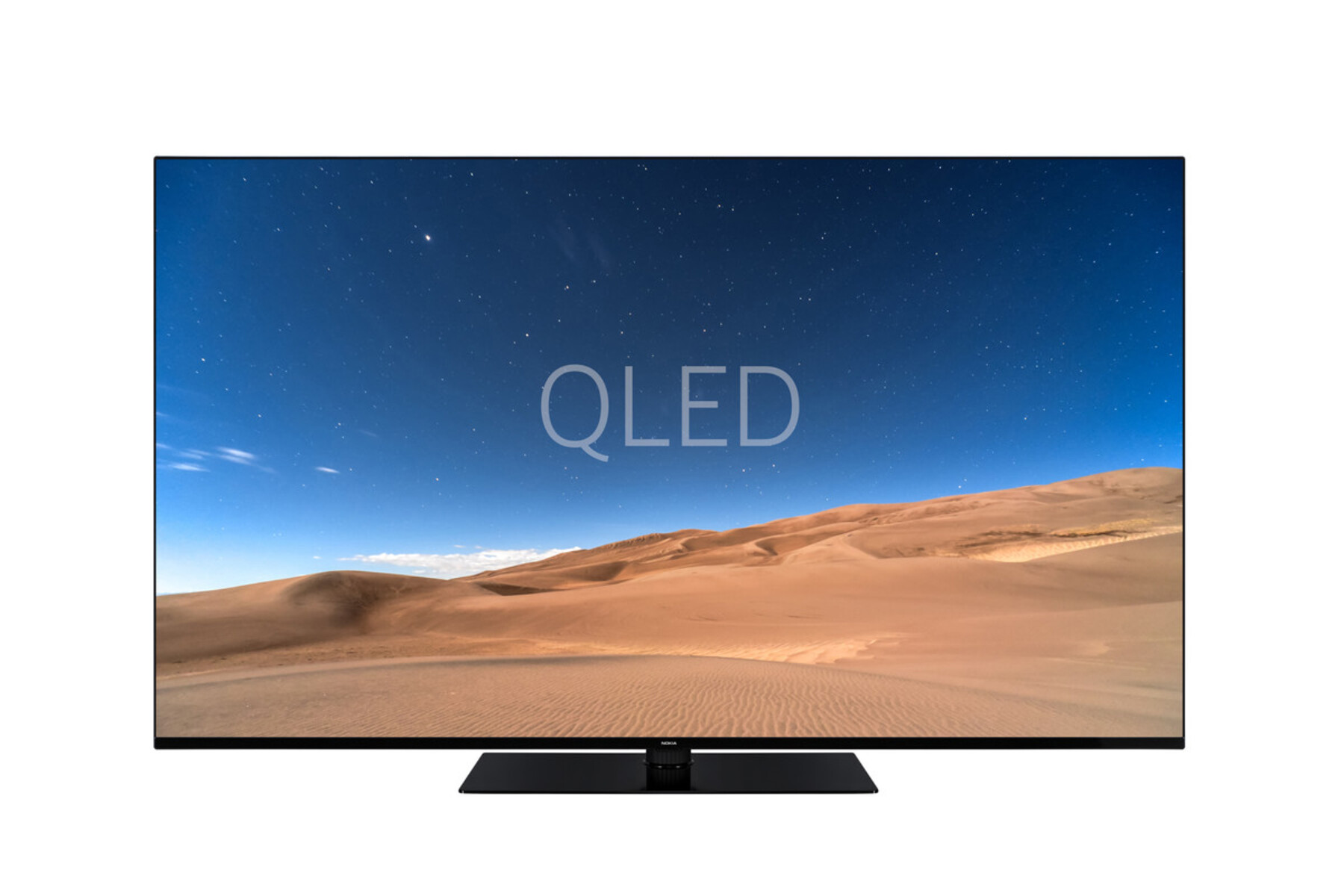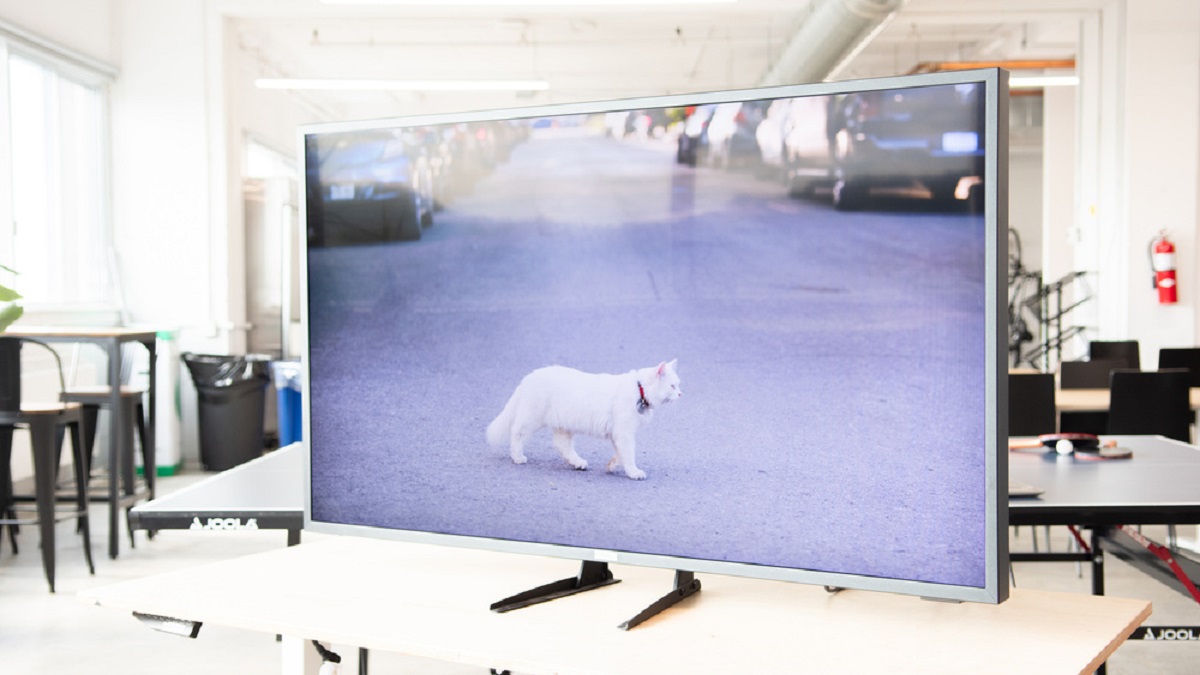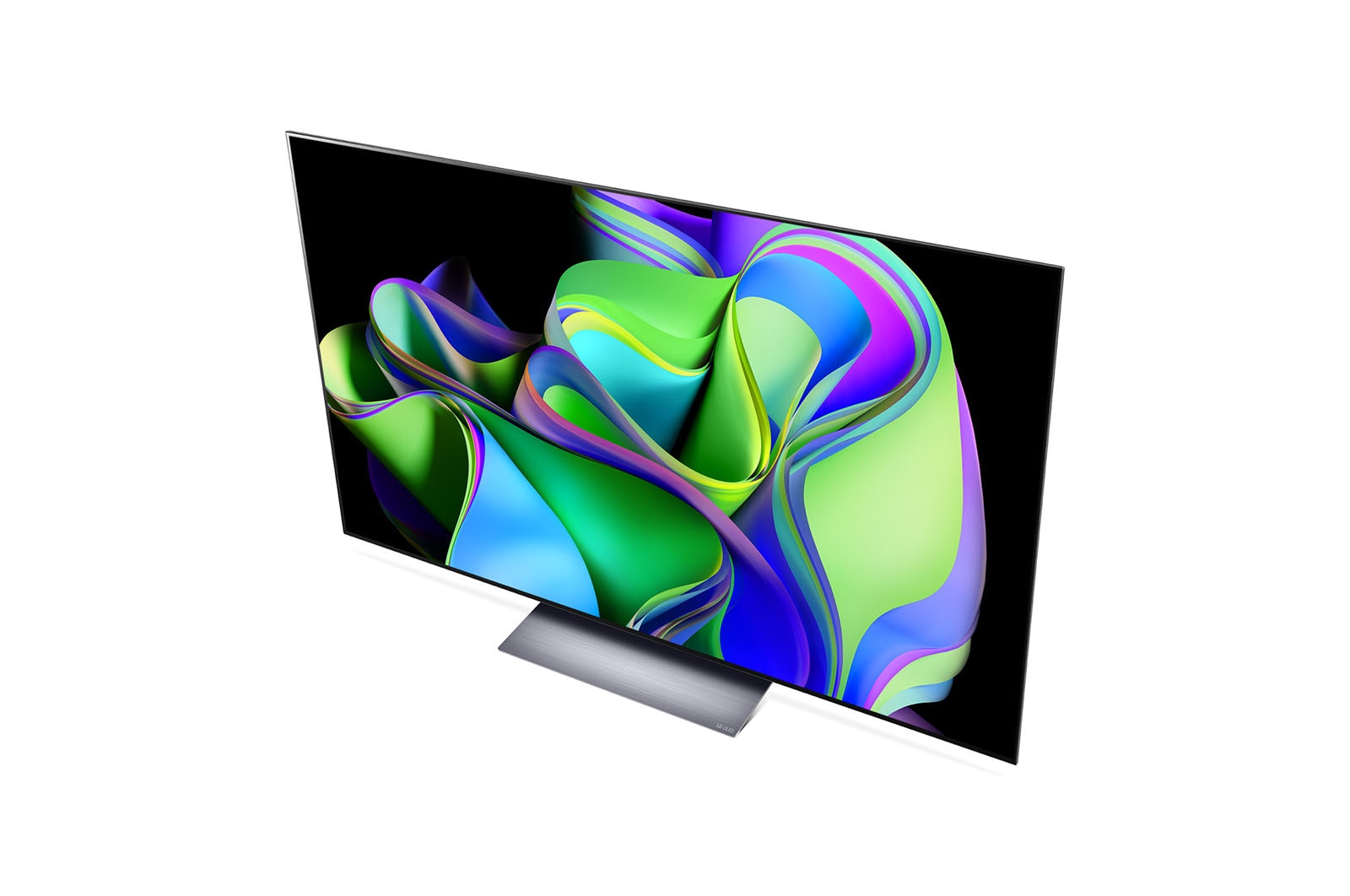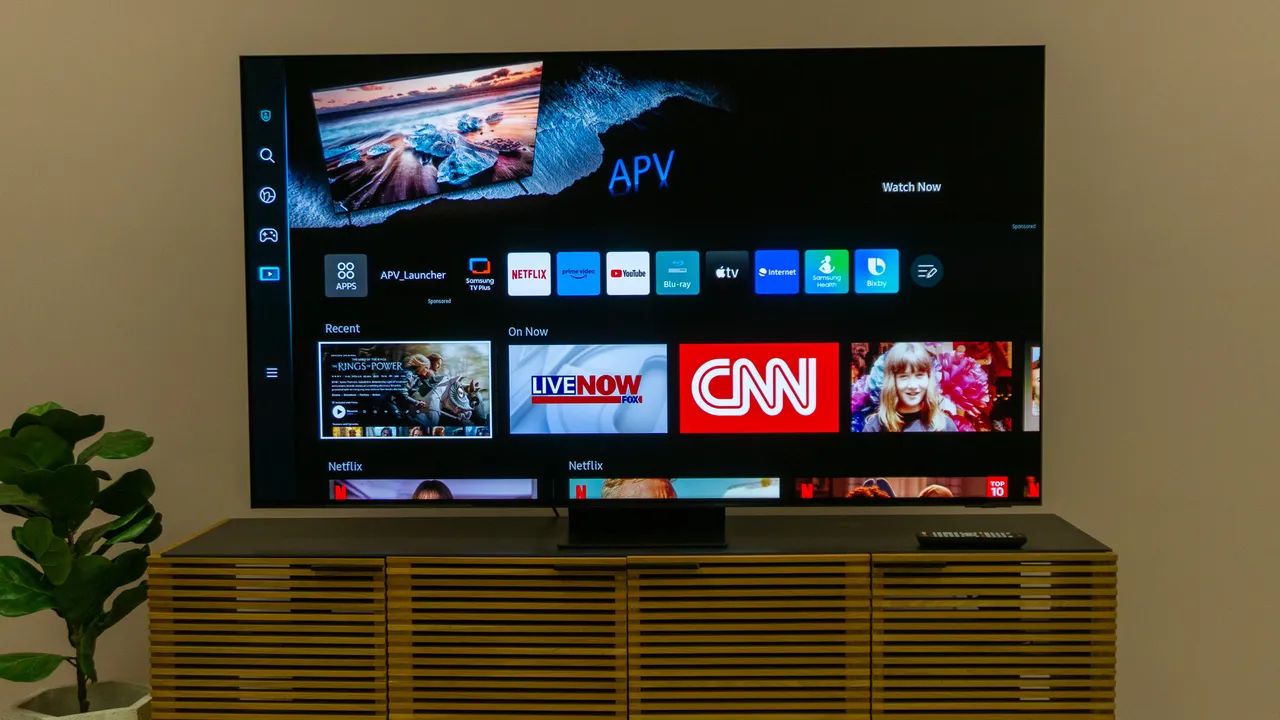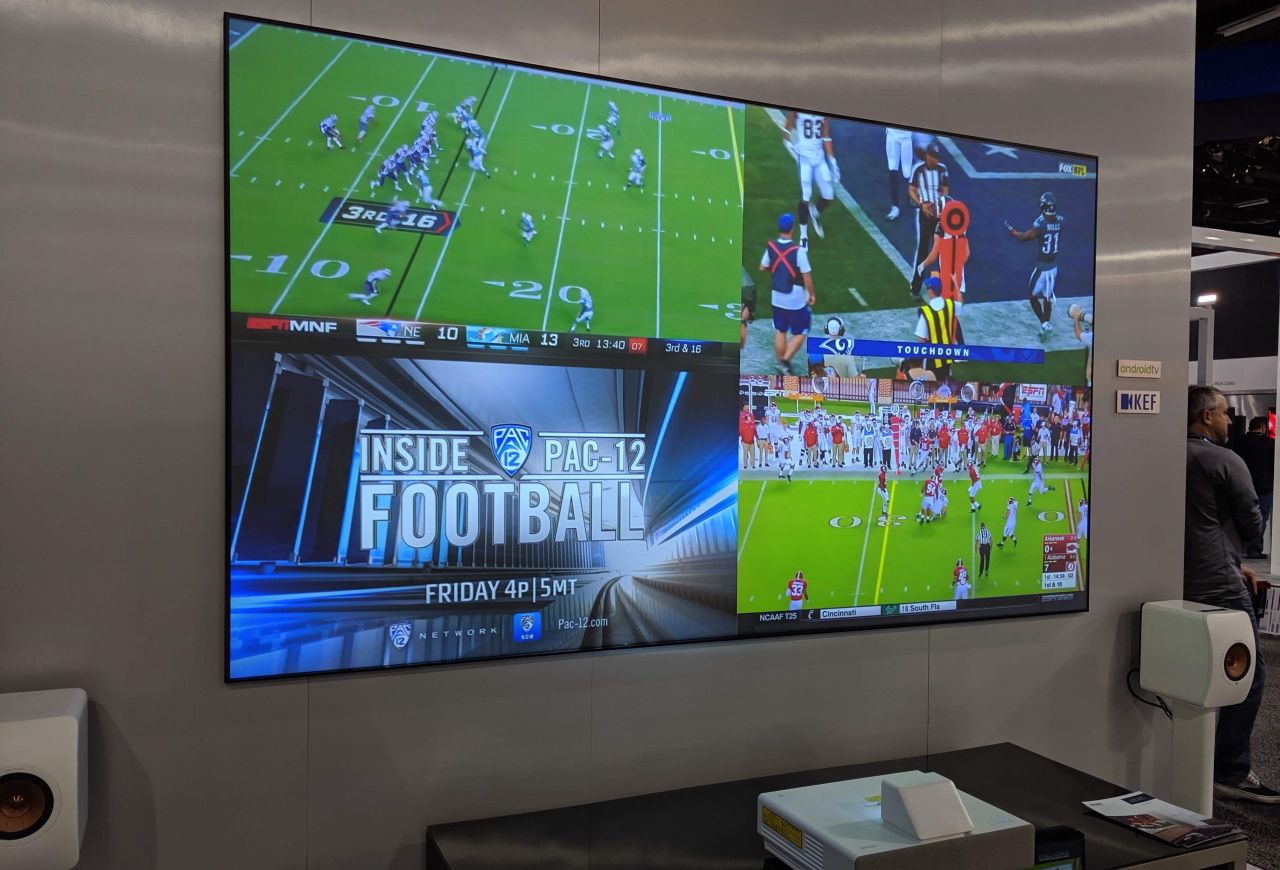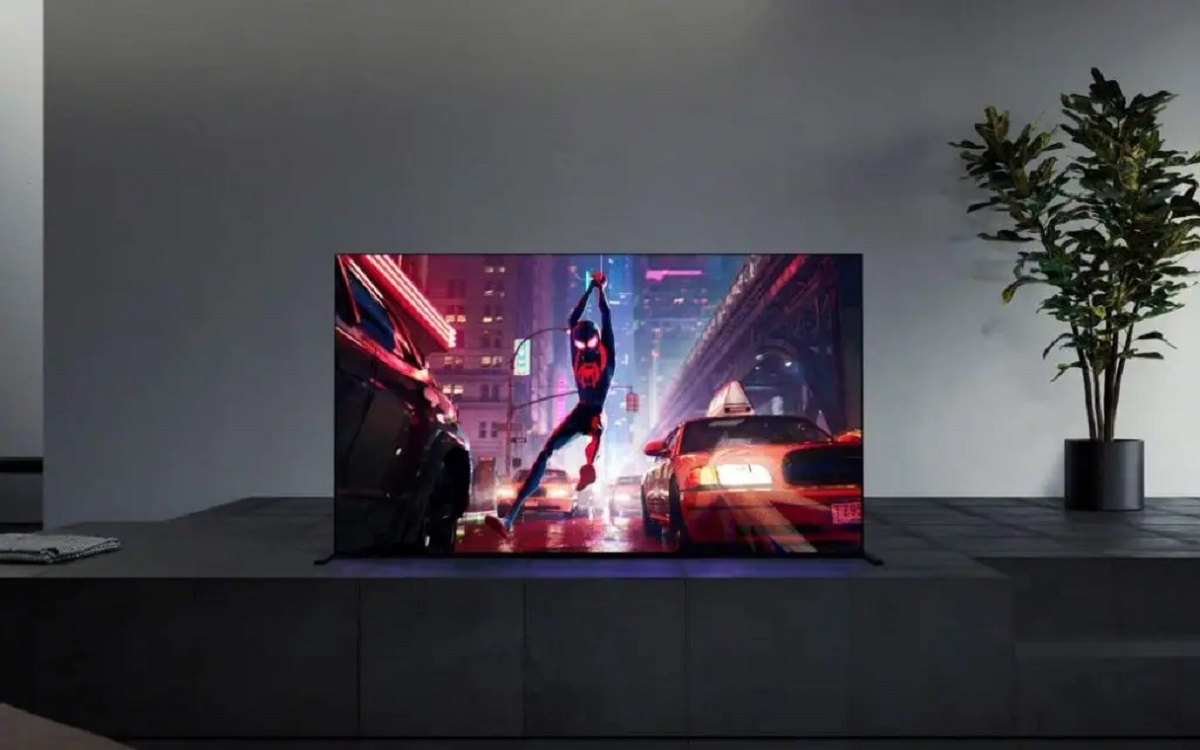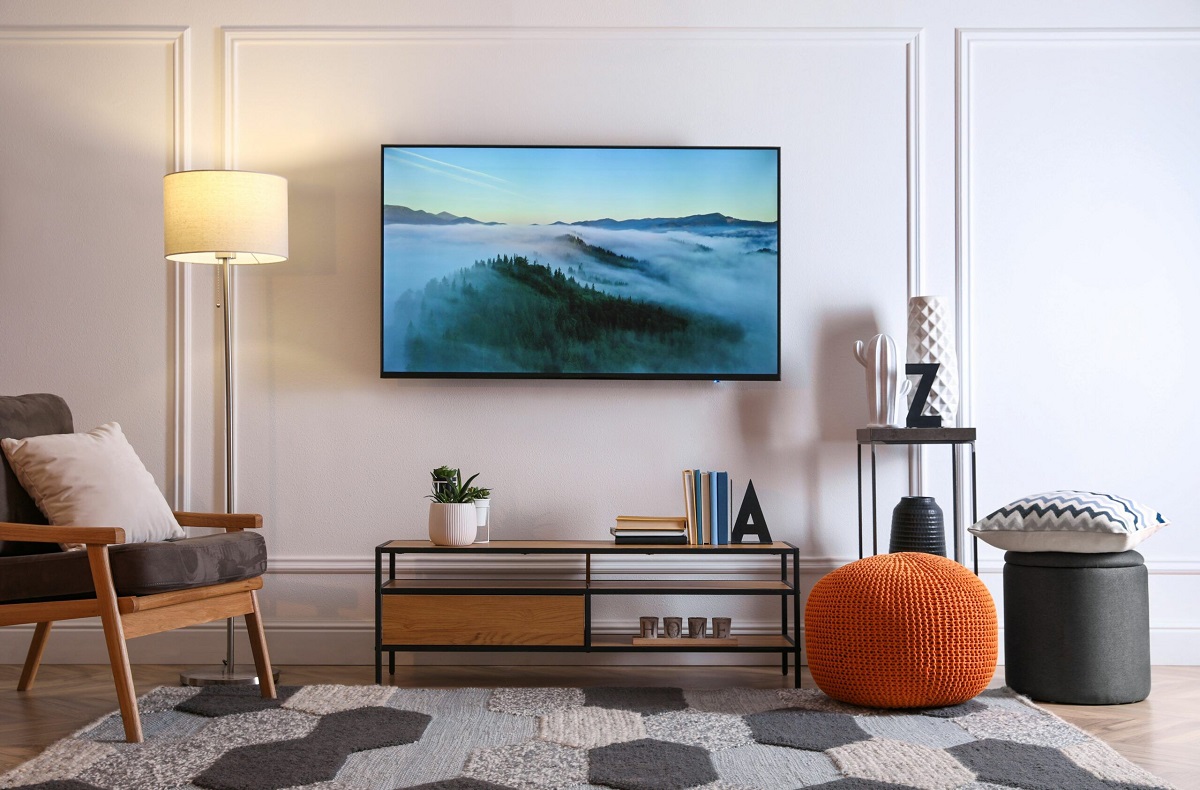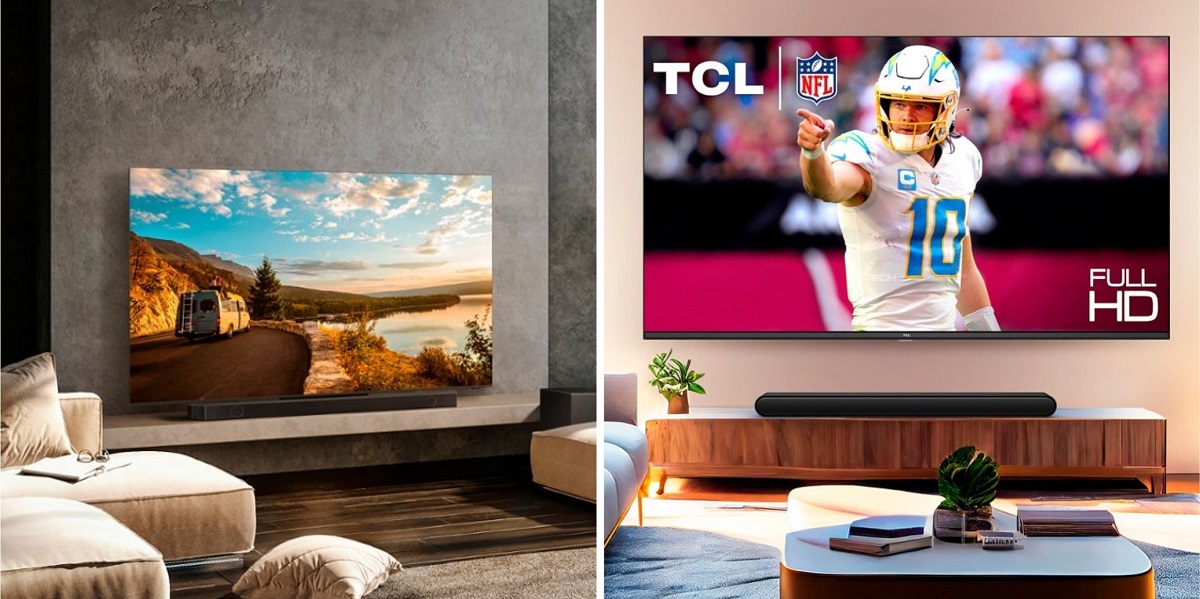Introduction
Welcome to the world of QLED TVs! As technology continues to advance, we are constantly inundated with a plethora of options when it comes to buying a new television. From screen size to resolution, there are numerous factors to consider. One aspect that often gets overlooked but is crucial for an immersive viewing experience is the refresh rate of the TV.
So, what exactly is a refresh rate? In simple terms, it refers to the number of times the image on the screen is refreshed per second. It is measured in Hertz (Hz), indicating the number of cycles completed in one second. A higher refresh rate means the image updates more frequently, resulting in smoother motion and reduced motion blur.
In this article, we will explore the importance of the refresh rate and its impact on overall picture quality. We will delve into the traditional 60Hz refresh rate, as well as higher refresh rate options like 120Hz and 240Hz, and discuss whether a higher refresh rate is always better. Additionally, we’ll address the question of whether a higher refresh rate is necessary for gaming enthusiasts.
So, whether you’re in the market for a new QLED TV or simply curious about the technical details, read on to discover how the refresh rate of a 65-inch QLED TV can significantly enhance your viewing experience.
What is Refresh Rate?
Before diving deep into the details, let’s start by understanding what exactly refresh rate refers to. In the world of TVs and monitors, refresh rate is a term used to describe how many times per second the display updates its image. It is essentially the rate at which the TV refreshes the pixels on the screen to display a new image.
Refresh rate is measured in Hertz (Hz), which represents the number of times the image is refreshed in one second. For example, a TV with a refresh rate of 60Hz displays a new image 60 times per second. Similarly, a TV with a refresh rate of 120Hz refreshes the image 120 times in a second.
The refresh rate is closely tied to the smoothness and fluidity of motion on the screen. A higher refresh rate results in smoother, more lifelike motion, while a lower refresh rate may exhibit noticeable motion blur or juddering during fast-paced scenes. The human eye perceives motion up to a certain limit, so a higher refresh rate can provide a more realistic and enjoyable viewing experience.
It’s important to note that refresh rate is different from frame rate. While refresh rate represents how many times the image on the screen is updated, frame rate refers to the number of individual frames displayed per second in the source content. The two are interconnected, as the refresh rate needs to be able to keep up with the frame rate to provide a seamless viewing experience.
Now that we have a basic understanding of what refresh rate is, in the next sections, we will explore the significance of refresh rate and how it affects picture quality, particularly when it comes to QLED TVs.
Understanding Hertz (Hz)
To better understand refresh rates, it’s important to familiarize ourselves with the concept of Hertz (Hz). Named after the German physicist Heinrich Hertz, Hertz is a unit of frequency that measures the number of cycles per second.
In the context of TVs and monitors, the refresh rate is measured in Hertz. For instance, a TV with a refresh rate of 60Hz updates the image 60 times per second. This means that every second, the screen refreshes 60 times to display a new image.
Higher refresh rates, such as 120Hz or 240Hz, indicate that the screen refreshes at an even faster pace. A TV with a refresh rate of 120Hz updates the image 120 times per second, while a TV with a refresh rate of 240Hz refreshes the image 240 times per second.
By increasing the refresh rate, the TV can display smoother motion on the screen. This is particularly noticeable during fast-paced action scenes or sports broadcasts, where the higher refresh rate can reduce motion blur and provide a more realistic viewing experience.
It’s important to note that not all content benefits from higher refresh rates. Many movies, TV shows, and video games are typically produced and displayed at 24 or 30 frames per second (fps). Since these frame rates are lower than the refresh rates of modern TVs, the TV has to employ various techniques, such as motion interpolation, to fill in the gaps between frames and create smoother motion.
Overall, understanding Hertz and its relationship to refresh rates is key to comprehending the capabilities and performance of QLED TVs. In the next section, we will examine the importance of refresh rate and its impact on picture quality.
The Importance of Refresh Rate
The refresh rate of a TV plays a crucial role in enhancing the overall picture quality and providing a more immersive viewing experience. A higher refresh rate allows for smoother motion, reducing motion blur and judder that can occur during fast-paced scenes.
One of the key benefits of a higher refresh rate is its ability to display fast-moving objects or action sequences with greater clarity. With a traditional 60Hz refresh rate, there can be noticeable blurring or ghosting when objects are in motion. However, with higher refresh rates like 120Hz or 240Hz, the TV can update the image more frequently, resulting in clearer and more defined visuals.
Furthermore, a higher refresh rate can make a significant difference when watching sports or playing fast-paced video games. The smoothness of motion offered by a higher refresh rate ensures that you don’t miss any important details during intense gameplay or exciting sports moments.
Additionally, the enhancements in picture quality that come with a higher refresh rate can make a significant impact on the overall viewing experience, particularly in terms of color vibrancy and image sharpness. This is especially true for QLED TVs, which already offer exceptional color accuracy and brightness. When combined with a higher refresh rate, the result is enhanced visual performance and a more engaging picture.
However, it’s important to note that the importance of refresh rate may vary depending on the type of content being viewed. While fast-paced action content benefits greatly from a higher refresh rate, movies and TV shows that are typically filmed at 24 or 30 frames per second may not require such high refresh rates. In these cases, the TV’s ability to handle lower frame rates and implement motion interpolation techniques becomes more relevant.
In the next sections, we will explore the traditional 60Hz refresh rate, as well as higher refresh rate options like 120Hz and 240Hz, to understand their advantages and whether a higher refresh rate is always better.
Refresh Rate and Motion Blur
Motion blur is a common phenomenon that occurs when fast-moving objects are captured or displayed. It refers to the blurring or smudging of the image, making the motion appear less crisp and defined. The refresh rate of a TV plays a vital role in minimizing motion blur and ensuring a smoother viewing experience.
When the refresh rate is low, such as the traditional 60Hz, the screen updates at a slower pace. This can result in more noticeable motion blur, especially when watching action-packed movies or playing fast-paced video games. During rapid movements, the image may not update quickly enough, leading to a trailing effect or blurry motion on the screen.
On the other hand, a higher refresh rate, like 120Hz or 240Hz, helps reduce motion blur by refreshing the image more frequently. With each refresh, the screen displays a clearer image, minimizing the blurring effect and delivering smoother motion. This is particularly noticeable during fast-action scenes, where the improved refresh rate can make a significant difference in the overall viewing experience.
It’s important to note that while a higher refresh rate can help reduce motion blur, it is not the sole factor in eliminating it entirely. Other factors, such as the response time of the display, also play a role. Response time refers to how quickly the pixels on the screen can change from one color to another. A faster response time ensures that the pixels can transition quickly, further reducing motion blur.
While a higher refresh rate can improve the clarity of motion, it’s worth considering the content being viewed. Content recorded at lower frame rates, such as movies at 24 or 30 frames per second, may not exhibit significant motion blur even on a 60Hz TV. However, for content produced at higher frame rates or for gaming enthusiasts seeking smooth gameplay, a higher refresh rate can greatly enhance the viewing experience and reduce motion blur.
In the next sections, we will explore the traditional 60Hz refresh rate and the advantages and considerations of higher refresh rates like 120Hz and 240Hz.
The Traditional 60Hz Refresh Rate
The 60Hz refresh rate has long been the standard in televisions and monitors. This means that the image on the screen is refreshed 60 times per second, providing a smooth viewing experience for most content types.
At a 60Hz refresh rate, the TV updates the image every 16.67 milliseconds (ms). While this is generally sufficient for watching movies, TV shows, and everyday content, it may fall short when it comes to fast-paced action scenes or gaming.
One of the limitations of a 60Hz refresh rate is its susceptibility to motion blur during rapid movements. Due to the slower rate of image updates, there can be noticeable blurring or trailing effects, especially when objects are in motion. This can detract from the overall clarity and smoothness of the viewing experience.
However, it’s important to note that not all content benefits from a higher refresh rate. Movies and TV shows are typically filmed and displayed at 24 or 30 frames per second. Since these frame rates are lower than the refresh rate of a 60Hz TV, motion interpolation techniques are often employed to create additional frames and fill in the gaps. This helps smooth out motion and reduce judder, providing a more enjoyable viewing experience.
Additionally, the majority of gaming consoles and PCs are designed to run at 60 frames per second or lower. This means that a 60Hz refresh rate is sufficient for most gaming scenarios. However, for gamers who prioritize smooth gameplay and reduced input lag, higher refresh rates like 120Hz or 240Hz can offer a significant improvement.
In summary, the traditional 60Hz refresh rate has been a reliable option for many years, providing a smooth viewing experience for various types of content. While it may exhibit some limitations in terms of motion blur, it has still proven to be sufficient for most everyday viewing needs. In the next sections, we will explore the advantages and considerations of higher refresh rates like 120Hz and 240Hz.
The Advantages of a Higher Refresh Rate
Higher refresh rates, such as 120Hz and 240Hz, offer several advantages over the traditional 60Hz refresh rate. These higher refresh rates provide smoother motion, reduced motion blur, and an overall more immersive viewing experience.
One of the key advantages of a higher refresh rate is the elimination or reduction of motion blur. With a 120Hz or 240Hz refresh rate, the screen updates the image more frequently, resulting in clearer and more defined visuals, especially during fast-paced action scenes. This means that objects in motion will appear smoother and more lifelike, enhancing the overall picture quality.
Furthermore, a higher refresh rate can help reduce judder, which is the uneven or jerky motion that can occur during panning shots or camera movements. With a traditional 60Hz refresh rate, judder can be more noticeable due to the slower rate of image updates. However, with a higher refresh rate, the TV can display the frames smoothly, resulting in a more seamless and immersive viewing experience.
In addition to improved motion handling, higher refresh rates can also be beneficial for gaming enthusiasts. Many modern games and gaming consoles can support higher frame rates, often up to 120 frames per second or even higher. With a 120Hz or 240Hz refresh rate, the TV can match the frame rate output of the game, providing a smoother and more responsive gaming experience. This can be particularly advantageous for competitive gaming, where every millisecond counts.
It’s important to note that the advantages of a higher refresh rate may be more apparent in certain types of content. Fast-paced action movies, sports broadcasts, and video games are scenarios where the improvements in smoothness and clarity are most noticeable. For slower-paced movies or TV shows filmed at lower frame rates, the difference may not be as pronounced.
Ultimately, the advantages of a higher refresh rate lie in its ability to deliver smoother motion, reduce motion blur, and enhance the overall viewing and gaming experience. In the next sections, we will delve into the specifics of the 120Hz and 240Hz refresh rates and discuss whether a higher refresh rate is always better.
The 120Hz Refresh Rate
The 120Hz refresh rate is a significant leap from the traditional 60Hz refresh rate, offering smoother motion and improved picture quality. With 120 image updates per second, the TV can display fast-paced action scenes with greater clarity and reduced motion blur.
One of the key advantages of a 120Hz refresh rate is its ability to provide a more lifelike and immersive viewing experience. The increased frequency of image updates results in smoother motion, making it easier for the viewer to track fast-moving objects. This is particularly noticeable during action-packed movies or sports broadcasts, where the enhanced refresh rate ensures that every frame is displayed with greater detail and precision.
Moreover, gaming enthusiasts can benefit greatly from a 120Hz refresh rate. Many modern games and gaming consoles support high frame rates, often up to 120 frames per second or even higher. With a 120Hz refresh rate, the TV can match the output of the game frame for frame, resulting in a smoother and more responsive gaming experience. This can be a game-changer for competitive gamers who rely on quick reactions and fluid gameplay.
Additionally, movies and TV shows that are filmed at 24 frames per second can benefit from a 120Hz refresh rate with the help of motion interpolation techniques. By inserting additional frames between the original frames, the TV can create a smoother motion and reduce judder that may occur during panning shots or camera movements.
It’s important to note that while a 120Hz refresh rate offers clear advantages over a traditional 60Hz refresh rate, the improvements may not be as pronounced as with higher refresh rates like 240Hz. The human eye has limitations in perceiving smoothness beyond a certain threshold, and the difference between a 120Hz and 240Hz refresh rate may not be as noticeable to everyone.
In summary, the 120Hz refresh rate provides enhanced motion clarity, reduced motion blur, and improved gaming performance. Whether you’re a movie enthusiast, sports fan, or a dedicated gamer, a 120Hz refresh rate can significantly elevate your viewing experience and immerse you in lifelike visuals. In the next section, we will explore the higher refresh rate of 240Hz and discuss its benefits and considerations.
The 240Hz Refresh Rate
The 240Hz refresh rate represents the pinnacle of high refresh rates in TVs. With 240 image updates per second, this refresh rate offers even smoother motion and unparalleled picture quality. The increased frequency of image updates ensures that fast-paced action scenes are displayed with exceptional clarity and minimal motion blur.
One of the main advantages of a 240Hz refresh rate is its ability to deliver incredibly smooth motion. The rapid image updates allow for seamless transitions between frames, resulting in fluid and lifelike motion on the screen. This is particularly beneficial for sports enthusiasts who want to capture every detail of the game or for action movie enthusiasts who crave the most immersive viewing experience.
Gaming at a 240Hz refresh rate is also a game-changer. Many high-end gaming monitors and gaming PCs now support refresh rates of 240Hz, allowing for tremendously smooth and responsive gameplay. With fast refresh rates like these, gamers can enjoy reduced input lag, quicker reaction times, and an overall more immersive gaming experience.
It’s important to consider that the difference between a 120Hz and 240Hz refresh rate may not be as noticeable to everyone. The human eye has limitations in perceiving smoothness beyond a certain threshold. While the 240Hz refresh rate offers further improvements over the 120Hz refresh rate, its benefits may be more pronounced and appreciated by competitive gamers or individuals who are particularly sensitive to motion blur.
Furthermore, it’s worth noting that content produced at lower frame rates, such as movies at 24 frames per second, can benefit from a 240Hz refresh rate when motion interpolation techniques are employed. These techniques can create additional frames between the original frames, resulting in smoother, more fluid motion without judder or blur.
In summary, the 240Hz refresh rate represents the pinnacle of smooth motion and exceptional picture quality. With its incredibly fast image updates, it offers the most immersive viewing and gaming experience available. However, it’s important to consider individual preferences, content type, and specific usage scenarios to determine whether the 240Hz refresh rate is necessary or worth the investment.
Is a Higher Refresh Rate Always Better?
While higher refresh rates like 120Hz and 240Hz offer advantages in terms of smoother motion and reduced motion blur, the question remains: is a higher refresh rate always better? The answer depends on several factors.
Firstly, the benefits of a higher refresh rate are most noticeable in fast-paced content, such as action movies, sports broadcasts, and gaming. In these scenarios, the increased image updates result in clearer motion and a more immersive viewing experience. However, for slower-paced content like dramas or documentaries, the difference may be less apparent.
Secondly, it’s important to consider the source material. Many movies and TV shows are filmed and displayed at 24 or 30 frames per second, and gaming consoles often operate at 60 frames per second. In these cases, a TV with a 60Hz refresh rate is sufficient to match the frame rate output. Higher refresh rates can still offer benefits in terms of motion interpolation and reduced judder, but the improvements may not be as pronounced.
Furthermore, not all content is created equal when it comes to frame rates. Some video games or high-end PCs can support frame rates higher than 60 frames per second, often reaching 120 frames per second or higher. For gamers seeking the smoothest and most responsive gameplay experience, a higher refresh rate monitor or TV, such as 120Hz or 240Hz, can make a noticeable difference.
Lastly, one must consider budgetary constraints. TVs with higher refresh rates tend to be more expensive, and not everyone may be willing or able to invest in the latest technology. It’s important to weigh the benefits and personal preferences against the cost of upgrading to a higher refresh rate device.
In summary, whether a higher refresh rate is always better depends on individual preferences, content type, and specific usage scenarios. While higher refresh rates offer advantages in terms of smoother motion and reduced motion blur, they may not be necessary or noticeable for all types of content. Understanding one’s viewing habits, the capabilities of the content source, and budget considerations can help make an informed decision on whether a higher refresh rate is worth the investment.
Do You Need a Higher Refresh Rate for Gaming?
Gaming has become an immensely popular form of entertainment, and many gamers are constantly seeking ways to enhance their gaming experience. One aspect that often comes into question is the need for a higher refresh rate. While a higher refresh rate can offer benefits, it’s important to consider various factors when determining whether it is necessary for gaming.
Firstly, it’s crucial to understand that not all games and gaming consoles can support high frame rates. Many consoles are designed to run games at 30 frames per second or 60 frames per second. In these cases, a TV with a 60Hz refresh rate matches the frame rate output of the game, resulting in a smooth gaming experience.
However, there are instances where gaming at higher frame rates is possible. PCs and some gaming consoles can support frame rates higher than 60 frames per second, often reaching 120 frames per second or even higher. In such scenarios, a higher refresh rate display, like a 120Hz or 240Hz TV, can provide a significant advantage. The faster image updates result in smoother motion, reduced motion blur, and improved responsiveness, giving competitive gamers an edge and a more immersive gaming experience.
It’s worth noting that not all games may benefit equally from a higher refresh rate. The genre of the game plays a role in determining the impact of a higher refresh rate. Fast-paced action games, first-person shooters, and racing games can showcase the benefits more prominently, as they involve quick movements and rapid changes on the screen. On the other hand, slower-paced games like puzzle or strategy games may not necessitate a higher refresh rate for an optimal experience.
Beyond the gaming experience itself, it’s important to consider personal preferences and budgetary constraints. While a higher refresh rate can enhance gameplay, it often comes at a higher cost. It’s essential to assess whether the additional benefits of a higher refresh rate outweigh the potential cost implications.
In summary, the need for a higher refresh rate in gaming depends on various factors, including the capabilities of the gaming console or PC, the specific game genre, personal preferences, and budget. For competitive gamers or those seeking the smoothest and most responsive gameplay, a higher refresh rate can provide a substantial advantage. However, for casual gamers or those primarily playing slower-paced games, a higher refresh rate may not be necessary for an enjoyable gaming experience.
Conclusion
The refresh rate of a TV plays a significant role in the overall viewing experience, particularly when it comes to motion clarity and smoothness. While the traditional 60Hz refresh rate has been the standard for many years, higher refresh rates like 120Hz and 240Hz offer distinct advantages.
A higher refresh rate, such as 120Hz or 240Hz, provides smoother motion, reduced motion blur, and an overall more immersive viewing experience. The increased frequency of image updates ensures that fast-paced action scenes are displayed with greater clarity and detail, making it easier to follow the action and enhancing the overall picture quality.
Furthermore, higher refresh rates can greatly benefit gaming enthusiasts. With gaming consoles and PCs capable of supporting high frame rates, a higher refresh rate display offers smoother and more responsive gameplay, reducing input lag and providing a competitive edge.
However, the necessity of a higher refresh rate depends on various factors. The benefits are most pronounced in fast-paced content like action movies, sports broadcasts, and certain video games. Slower-paced content may not realize the same level of improvement. Additionally, personal preferences and budgetary constraints should also be taken into consideration when deciding whether to invest in a higher refresh rate display.
In summary, the refresh rate of a TV is an essential consideration when it comes to enhancing the picture quality and overall viewing experience. While higher refresh rates offer benefits in terms of motion clarity and smoothness, they may not always be necessary or noticeable for all types of content. Understanding one’s viewing habits, the capabilities of the content source, and the specific requirements of gaming can help determine whether a higher refresh rate is worth the investment.







